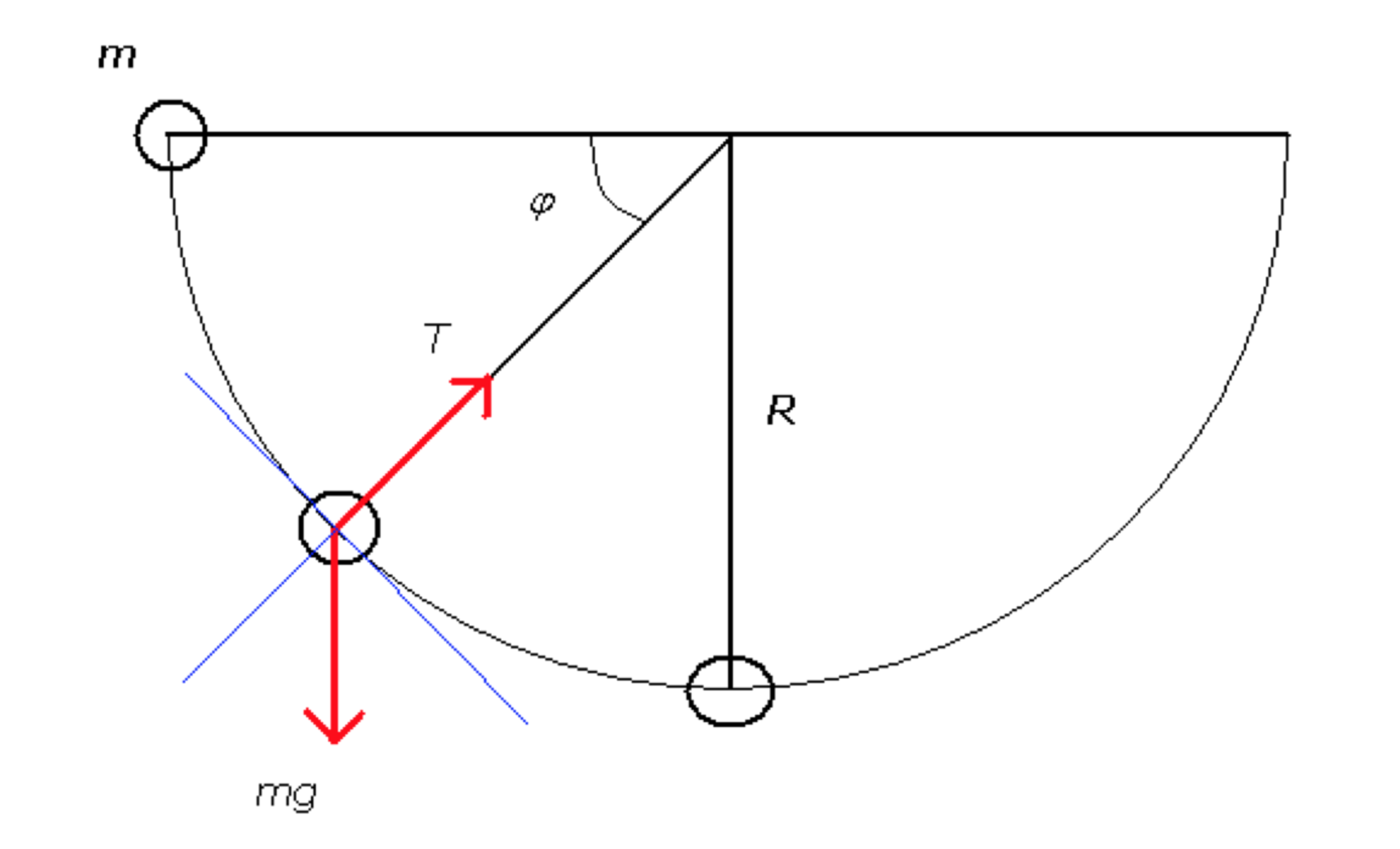Long swing pendulum
How long does it take for a simple bob pendulum of mass and length = 1.00 m, released from rest, to move from a horizontal-rope position to a vertical one? Consider = 9.81 m/s and ignore dissipative forces.

The answer is 0.592.
This section requires Javascript.
You are seeing this because something didn't load right. We suggest you, (a) try
refreshing the page, (b) enabling javascript if it is disabled on your browser and,
finally, (c)
loading the
non-javascript version of this page
. We're sorry about the hassle.
Consider the pendulum at an arbitrary time t making an angle θ with the horizontal as shown in the diagram. Consider a cartesian coordinate system to be placed on the point of suspension of the pendulum such that the Y-axis points upwards and the X-axis points horizontally to the right. The coordinates of the bob of the pendulum in terms of θ can be written as:
x = − L cos θ y = − L sin θ
The potential energy of the system at this instant is:
V = − m g L sin θ
The kinetic energy of the system is:
T = 2 1 m ( x ˙ 2 + y ˙ 2 ) = 2 1 m L 2 θ ˙ 2
Now recognising that energy is conserved, we get:
T + V = T i n i t i a l + V i n i t i a l = 0
On replacing expressions and simplifying gives:
θ ˙ = L 2 g sin θ
Separating variables and integrating:
2 g L ∫ 0 π / 2 sin θ d θ = t ≈ 0 . 5 9 2 s
The above integral can be solved using the concept of Gamma functions but the integral itself is not the focal point of this problem, so those details have been omitted.